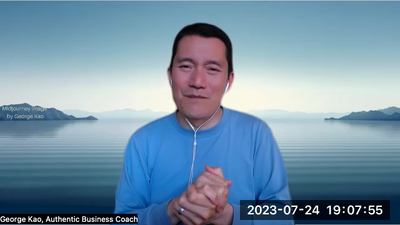- Orientation
- BizPlan
- BizPlan25
- Authentic Speaking
- Authentic Market Discovery
- Create Aligned Offers
- Joyful Productivity (Course)
- ✨ Authentic Outreach (AO)
- Joyful Pro
- Blog-to-Book
- 🚀 Course Creators
- 🖼️ Your Signature Framework
- 🙋 Effortless Yes
- 🌈 Energy Signature
- Meta Ads (FB / IG Advertising)
- 📱 Instagram Mastery
- 🎤️ Interview Mastery
- Launch Your Group Program
- Netcaring
- 🦸🏽✍🏽 Soulful Content (OGI)
- Substack Course
- "What do you do?"
- 🎬 YouTube Mastery

I support leaders to improve the collaboration within teams and between teams so that they can reach challenging goals even in uncertain environments.
My approach is based on three pillars:
🧭 Sharpening goals and focus
All employees have a clear idea of the short- and long-term goals of your company or team. All activities are directed towards this goal. The goal appears worthwhile to all employees and they recognise their contribution to it.
☺️ Strengthen individual capabilities
You and your employees can communicate expectations clearly, negotiate requirements flexibly, address irritations quickly, and thus ensure an appreciative climate conducive to performance.
⚪ Structures for good cooperation
You have established productive habits, routines and structures in the company so that you can achieve your goals with the least amount of effort. Your corporate culture promotes effective cooperation.
I support leaders to improve the collaboration within teams and between teams so that they can reach challenging goals even in uncertain environments.
My approach is based on three pillars:
🧭 Sharpening goals and focus
All employees have a clear idea of the short- and long-term goals of your compan…
 4:59
4:59

- Summarize this thread
- Copy link
 13:19
13:19
- Summarize this thread
- Copy link
 7:43
7:43
When you are getting little response for your content & offers... how to still do marketing as ministry?
This is a preview lesson and you can watch it by clicking the Play button above. Enjoy :) Regarding the comments below -- to read or add, you need to have enrolled in one of my courses recently. Check out the options here. Any course you enroll in will give you 2 months of full access to these Q&A segments, including the ability to read and add comments.
- Summarize this thread
- Copy link
 10:52
10:52
To make it easier for you to answer the prompts coming up - 2 strategies...
Coming up there will be many prompts to help you create your About Page / Bio. Many people find it challenging to journal in isolation about these questions. Here are 2 strategies to help: If you find a prompt difficult to write about, just move onto the next prompt/lesson and see if you can write anything about that instead. Even just a few words is great as a start. Just keep moving onto the next prompts until you find something you can write about. Then as you get into more of a flow, you can go back and fill in the earlier prompts. Alternatively -- interview each other! See my video above for the explanation of how to do this. Comment below if you'd like to buddy up with someone to do this kind of interview. Again, first watch the video above.
- Summarize this thread
- Copy link
Yep. That helps. Love it ❤️
 2:21
2:21
- Summarize this thread
- Copy link
Looking forward to be part of this evolution 😀
At the beginning, it feels like you're "playing ball by yourself"...
Click here for the video (Youtube) You are welcome to share the above public video with others!
- Summarize this thread
- Copy link
Thank you
It reminds me of what Rainer Maria Rilke is talking about in his poem: initially, it's not so much a conversation or a game between me and my audience, but rather being in touch with my Higher Self
Catch only what you've thrown yourself, all is
mere skill and little gain;
but when you're suddenly the catcher of a ball
thrown by an eternal partner
with accurate and measured swing
towards you, to your center, in an arch
from the great bridgebuilding of God:
why catching then becomes a power--
not yours, a world's.
(source: As long as you catch what you yourself have thrown - The Art and Popular Culture Encyclopedia)
- Summarize this thread
- Copy link

